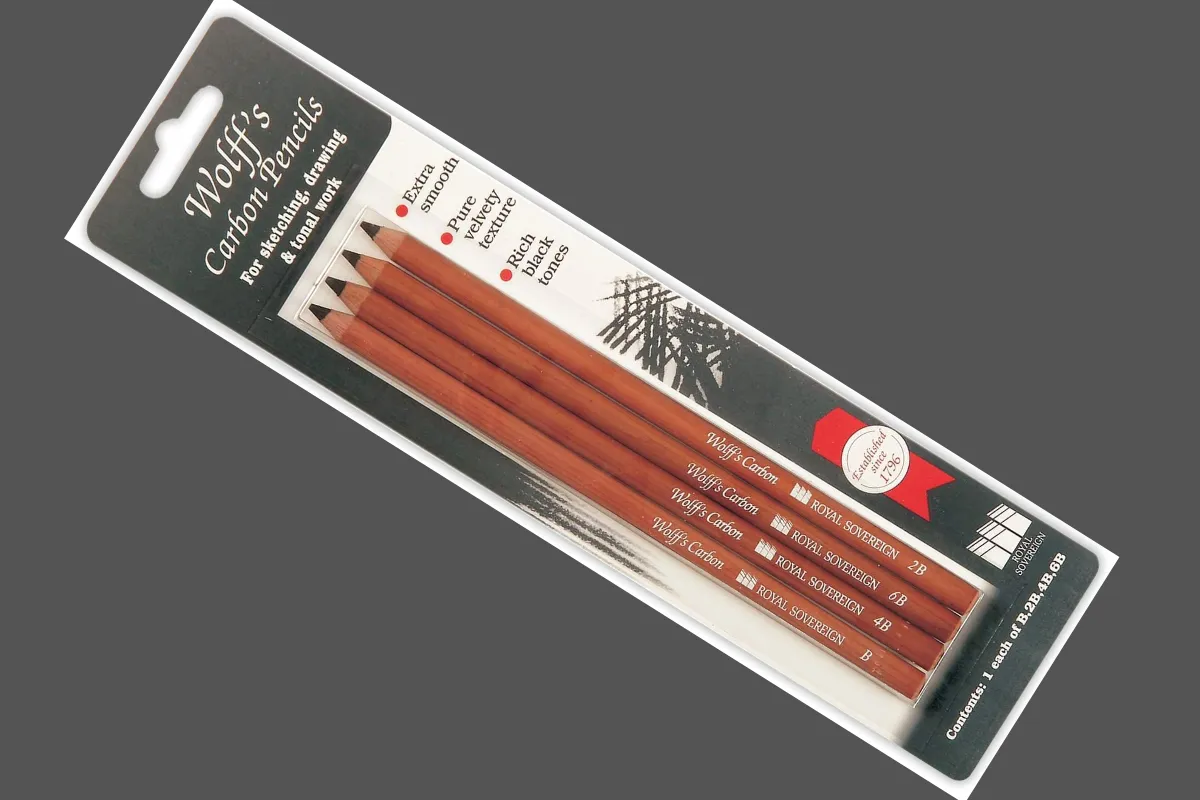Everything There Is To Know About Pencils!

Introduction
Don’t we all enjoy drawing? The feeling of putting a pencil on paper to draw feels absolutely amazing! Not just for drawing, pencils are essential for writing as well. But do you know everything there is to know about pencils? There are many interesting facts about pencils, from their invention to their types.
There are also many things to consider before buying pencils. And, I am going to share those in this article. So, read on!
Types of Pencils
Before we directly jump onto pencil types, let’s see what pencil lead is and what is it made of generally.
Leads are the core of any pencil. Pencil lead is made of graphite, and graphite is made of layers of carbon. Though the primary element is graphite, it’s actually a mixture of grounded graphite and clay powder, which is encased in a small covering over it. The case can be either a wooden or metal barrier.
Now let’s have a look at different types of pencils.
Graphite pencils

Photo by Lisa Fotios on Pexels
Of all the different types of pencils, these are the most common. These are made of a mixture of graphite and clay, encased in a wooden covering over them. These are also known as wooden pencils. You can find these pencils in any art supply store.
Woodless Pencils

Photo from Karststonepaper
With the same features as graphite pencils, woodless pencils don’t have any wooden case covering them. Meaning they are just solid graphite sticks! Therefore, these are often called “solid graphite” pencils. These are mainly used for sketching.
Charcoal Pencils

Photo by Ray Piedra on Pexels
As the name suggests, these pencils are made of charcoal. They are typically wrapped in wood or paper. They are available in different tinted colors too. Charcoal pencils can be used for writing and sketching.
Carbon Pencils

Photo from Amazon
Carbon pencils are made of a mixture of clay and a black pigment (lamp black). To change the darkness level, a combination of charcoal or graphite is used in these pencils. They are great at blending smoothly, but the marks are quite difficult to remove.
Colored Pencils

Photo by Kelli Tungay on Unsplash
These pencils are also known as “pencil crayons” and are made with color pigments. You can find three types of colored pencils- wax-based, oil-based, and watercolor pencils. Erasable color pencils are also available. You can remove the stroke if you make any wrong one. These are commonly used for fine arts and kid’s drawing.
Grease Pencils

Photo from Sharpie
These are made of wax and the leads are wrapped in paper. Another name for these pencils you might hear is China marker. Grease pencils are perfect for writing or marking on almost any surface. They can also be used for drawing purposes.
Mechanical Pencils

Photo by Pixabay on Pexels
These are pencils having graphite cartridges within a metal or plastic frame. The structure of a mechanical pencil looks quite similar to a ballpoint pen. Leads are replaceable in mechanical pencils.
They are designed to push the lead bars through the end of the frame hole to replace them with new ones. Used for writing mostly, the best part is that mechanical pencil doesn’t need to be sharpened like traditional wooden pencils.
Graphite Pencils Based on Grade
Graphite pencils are also graded and categorized according to hardness levels. There are four major types of pencils we can see–Hard (H), Black (B), Hard-black (HB), and Firm (F). All these four types vary in terms of the degree or intensity of the stroke they make and are classified by numbers. For example, 2H, 3H, 2B, 3B, etc.
If you’re confused about which one to choose for which purpose, here is a quick chart for you:
| Type | Best used for |
|---|---|
| Graphite Pencils | Writing, sketching, drawing, shading |
| Woodless Graphite Pencils | Drawing |
| Charcoal Pencils | Writing and sketching |
| Carbon Pencils | Sketching and blending |
| Colored Pencils | Drawing |
| Grease Pencils | Marking |
| Mechanical Pencils | Writing, for thinner stroke |
There are also some other pencils, such as carpenter pencils, golf pencils, and stenography pencils. These have a specific purpose, and you can easily guess that by their name.
What Is Lead Hardness?
As mentioned earlier, pencil lead is a mixture of grounded graphite and clay powder. Mixing these is necessary because it helps to create different kinds of pencils. The more clay the mixture has, the lighter the stroke of the pencils. And this is where the hardness scale came from. On the HB scale, H stands for hard, and B means black.
So basically, lead hardness means the degree or intensity of the color, quantity, or extent of usage a pencil could produce. Here is a chart of the lead hardness of different pencils.
| Grade | Intensity of Hardness |
|---|---|
| 4B, 5B, 6B, 7B, 8B, 9B | Very Soft |
| B, 2B, 3B | Soft |
| HB, F | Medium |
| H, 2H | Hard |
| 3H, 4H, 5H | Very Hard |
| 6H, 7H, 8H, 9H | Extremely Hard |
How Long Is An Average Pencil?
There are no standard pencil dimensions or standard size for pencils. Sizes vary depending on materials, brand, or manufacturer. So there is no fixed length for pencils.
On average, a new, unsharpened, standard wooden pencil with eraser measures about 7.5 inches (19 centimeters) in length. And, the standard length of mechanical pencils is around 7 inches or 18 centimeters.

Photo by Tirachard Kumtanom on Pexels
This also varies from brand to brand. For example, the most popular brand Faber Castell’s 90003 brand pencils are about 6.8 inches (17.5 centimeters).
Weight Of Pencil
The weight of any pencil varies depending on its length, diameter, materials, and manufacturer or brand. As there are no standard pencil dimensions, weight is also not fixed for any pencil standard size.
But there is always a standard dimension worldwide for a standard wooden pencil. Generally, a regular, unsharpened number 2 (HB) pencil weighs between 5.5 - 10 grams (0.2-0.35 ounces). While mechanical pencils with metal casings are much heavier than this. In general, mechanical pencils weigh between 20 - 40 grams (0.7-1.4 oz).

Photo by Ave Calvar on Unsplash
Diameter of Pencil
Pencils are usually hexagonal, so diameter might not be the best word to describe its thickness. This width or thickness is the first thing that you feel when you hold it in your index finger and thumb. Hence, you may feel a bit uncomfortable at first if you change your pencil's brand and switch to a larger or smaller diameter pencil. As pencils don't have a standard diameter across all brands, this is more common than you realize.
The diameter of a pencil lead usually ranges from 0.2 millimeters to 5.6 millimeters. And the diameter of a standard pencil is 7 millimeters (0.28 inches).
Materials of A Regular Pencil
Primarily, a regular wooden pencil is made of wood and graphite. Graphite is used for the leads and wood for the case.
Other types, like mechanical pencils, are made of graphite with metal frames. Regular color pencils are made of either wax or oil with color pigments.
How To Choose Your Pencil?
It depends on how and for which purposes you are using the pencil. Pencil grade and shade level are important things to consider. For example, if you need a drawing pencil, you must use softer pencils for shading. In that case, B-grade pencils will be a better option to choose from. You can start with 2B or 3B pencils if you are a newbie. The higher the B the better it is for broader shading.
If you are looking for precision and light shading you need H grade pencils. The harder the lead, the finer the output.
For regular purposes, any average-grade wooden pencils will be fine. H and HB pencils are more than enough for construction purposes to draw dimensional lines or lettering. Here's a summary:

Conclusion
Knowing about standard pencil dimensions might not be necessary for you. But knowing the different types and purposes of pencils can help you find the perfect pencil you need for your daily usage.




